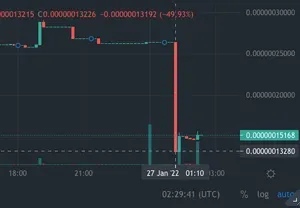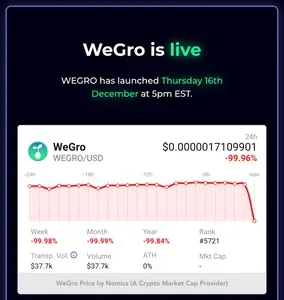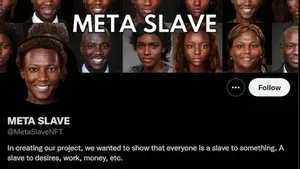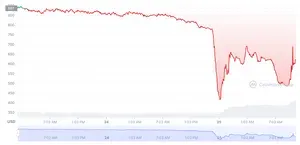Melania Trump apparently wash trades her own NFT
Creators of the play-to-earn game "Mercenary" rug pull for more than $760,000
New Zealand auction house Webb's invites buyers of historic glass negative and associated NFT to "make it permanently digital" by smashing the plate after they buy it
Sports fans face losses as IQONIQ platform liquidates and token value plummets
"Let's Go Brandon" coin suddenly drops 50% in value
WeGro token plunges in value as its developer apparently drains 1,000 BNB ($378,000)
"MetaSlave" project tries to sell NFTs of Black people
Investors suffer enormous losses as "cascading liquidations" tank the Wonderland protocol token price below its supposed intrinsic value
The $TIME tokens are issued against a set of assets that supposedly give the token an intrinsic value, and if the price drops below the backing price, the protocol uses the assets in their treasury to buy back the token to bring it back up to its "fair value". In the day following the crash, the protocol's founders spent several million dollars in buy-backs, which briefly boosted the token back up to trading at around $600.
The project's team reportedly suffered major liquidation losses themselves, with the founder Daniele Sestagalli losing $15 million and the chief developer "0xSifu" losing $1.6 million. Sestagalli briefly caused panic in the community when he set his 300,000+ follower Twitter account to private after tweeting "Dude I just woke up losing 10 m dollars", but set the account back to public shortly after. He retweeted a thread stating that "the internal struggle for growth is cut short by the willingness of some entities to 'eat' all that they'r able to, instead of 'cultivating' and sharing what would be exponential profits in the future."
Promised NFT game "Blockverse" rug pulls 500 ETH ($1.2 million)
John Lennon's son is delighted to be able to "auction off" items from his private Beatles collection without actually, you know, selling anything
Lennon said, "I've been collecting these personal items for about 30 years, and I was getting a bit fed up with them being locked away in a vault, where I've had to keep them because I didn't want them to get damaged... I actually felt very bad about keeping all that stuff locked away." Apparently photographing the items and displaying them digitally somehow was not possible until NFTs came along?










